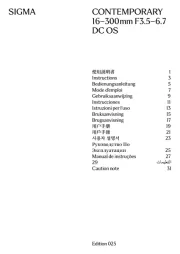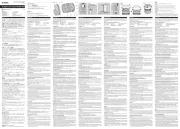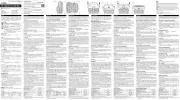Sigma 18-125mm F3.5-5.6 DC OS HSM Handleiding
Bekijk gratis de handleiding van Sigma 18-125mm F3.5-5.6 DC OS HSM (1 pagina’s), behorend tot de categorie Lens. Deze gids werd als nuttig beoordeeld door 107 mensen en kreeg gemiddeld 4.6 sterren uit 54 reviews. Heb je een vraag over Sigma 18-125mm F3.5-5.6 DC OS HSM of wil je andere gebruikers van dit product iets vragen? Stel een vraag
Pagina 1/1

Thank you very much for purchasing a Sigma In order to get the maximum Lens.
performance and enjoyment out of your Sigma lens, please read this instruction
booklet thoroughly before you start to use the lens.
DESCRIPTION OF THE PARTS (fig.1)
DC LENS
These are special lenses that are designated for digital cameras because the lens image
circle is designated to correspond to the size of the image sensors of most digital SLR
cameras. The specialized design gives these lenses the ideal properties for digital cameras.
◆ An image sensor element larger than those corresponding to APS C cannot be used in -
digital cameras or 35mm SLR cameras. If such an element is used vignetting will occur
on the picture surface.
◆ If you use SD14 or SD 9 10 or SD digital camera, corresponding angle of view will be
30 212- mm.
ATTACHING TO CAMERA BODY
When this lens is attached to the camera body it will automatically function in the same way
as your normal lens. Please refer to the instruction booklet for your camera body.
◆ On the lens mount surface, there are a number of couplers and electrical contacts.
Please keep them clean to ensure proper connection. To avoid damaging the lens, be
especially sure to place the lens with its front end down while changing the lens.
The sigma lens functions automatically after mounting to your camera. Please, refer to the
camera instruction book.
FOCUSING AND ZOOMING
For autofocus operation, set the focus mode switch on the lens to “AF” position.
If you wish to focus manually, set the focus mode switch on the lens to the “MF” position.
You can adjust the focus by turning the focus ring.
◆ In the case of Pentax fit, Auto Focus can only be used with HSM compatible camera
models. Other camera models can be used in Manual Focus only.
◆ To avoid damaging AF , please do not turn the focus ring manually while in mechanism
the autofocus mode.
◆ When operating this lens in manual focus mode, it is recommended that correct focus be
confirmed visually in the viewfinder rather than relying on the distance scale. This is
due to possible focus shift resulting from extreme changes in which cause temperature
various components in the lens to expand and contact. Special allowance is made for
this at the infinity setting.
《 》Zooming
Rotate the Rubber grip on the zoom ring to the desired position.
《 》Z L Switchoom ock
This lens is also equipped with Zoom Lock Switch to eliminate the zoom creep when the
lens is tilted down. Please set zooming ring to 18mm and set the zoom lock switch to the
“ . ( 2) LOCK” position fig.
MAGNIFICATION
Th “ ” e indication of the lens as 1:xx on a focusing distance scale represent the magnification
(commonly called the reproduction ratio). For example when you are in focus at the
“ 8” 81:3. position on the scale, a subject with an actual size of 3. cm will have an image size
of 1cm on the firm. ( 3) fig.
ABOUT OS (OPTICAL STABILIZER) FEATURES
This OS lens effectively compensates for image blurring caused by camera shake. Using
the Optical Stabilizer function it is possible to get sharp results at shutter speeds
approximately 3-4 stops slower than you could without using the OS function.
Set the switch to Press the shutter button halfway down, confirm the image OS ON (f . . ig 4)
in the viewfinder is stable then take the picture. (It takes approximately 1 second to produce
a stable image from the time of depressing the shutter button halfway).
◆ Sony and Pentax fittings are not equipped with Stabilizerthe Optical (OS) function.
◆ Do not use the Optical Stabilizer in the following situations:
▪ When the lens is mounted on a tripod. ▪ When using the camera in Bulb mode.
◆ The Optical Stabilizer function is powered from the camera. If the OS lens is attached to
your camera and activated, shooting capacity of your camera will be lower than with
co Snventional lenses used with the same camera. If you are not using O , please turn
OFF OS the switch, in order to prevent unnecessary battery consumption.
◆ Be sure to turn the OS switch to the OFF position before attaching or detaching the lens
to the camera.
◆ The OS continues to operate after you release your finger from the shutter button, as
long as the exposure meter displays the exposure value. Never remove the lens or
remove the camera’s battery while the image stabilizer is operating as this could damage
the lens.
◆ Although the viewfinder image may appear to shake immediately after shooting and/or at
the start of the flash charge cycle of the camera’s built-in flash, it will not cause any effect
to the pictures.
◆
If the lens is detached from camera or the camera power is turned off while the O S
function is in operation, the lens may emit a chattering noise, but this is not a malfunction.
LENS HOOD
A bayonet type detachable hood is provided with the lens. This lens hood helps to prevent
flare and ghosted images caused by bright illumination from outside the picture area.
Attach the hood and turn clockwise until it stops rotation. (fig.5)
◆
When taking photographs using the built in flash, it is advisable to remove the lens hood so -
as to avoid cutting off any of the flash output, which could cause a shadow in the picture.
◆ In order to place the lens and hood into the storage case, you must first remove the
hood, then replace it on the lens in the reverse position. (fig.6)
FILTER
◆ Only one filter should be used at the time. Two or more filters and/or special thicker
filters, like a polarizing filter, may cause vignetting.
◆ When us ngi a polarizing filter with AF camera, use the “circular” type.
BASIC CARE AND STORAGE
◆ Avoid any shocks or exposure to extreme high or low temperatures or to humidity.
◆ For extended storage, choose a cool and dry place, preferably with good ventilation. To
avoid damage to the lens coating, keep away from mothballs or naphthalene gas.
◆ Do not use thinner, benzine or other organic cleaning agents to remove dirt or finger
prints from the lens elements. Clean by using a soft, moistened lens cloth or lens tissue.
◆ This lens is not waterproof. When you use the lens in the rain or near water, keep it
from getting wet. It is often impractical to repair the internal mechanism, lens elements
and electric components damaged by water.
◆ Sudden temperature changes may cause condensation or fog to appear on the surface
of the lens. When entering a warm room from the cold outdoors, it is advisable to keep
t he lens in the case until the temperature of the lens approaches room temperature.
TECHNICAL SPECIFICATIONS
Lens construction
12 – 16
Angle of View
69.3 – ° 11.4
Minimum Aperture
22
Minimum Focusing Distance
0. 1.1535m ( ft)
Magnification
1:3.8
Filter Size
67mm
Dimensions D L ia.×ength
74 mm ( ) ×88.5 2.91×3.48 in
Weight
505g 17.8( ) oz
Dimensions and weight include the SIGMA mount.
The CE Mark is a Di
rective conformity mark of the European
Community (EC).
SIGMA (Deutschland) - -GmbH Carl Zeiss Str. 10/2, D-63322 Rödermark, F.R.GERMANY
Verkauf 01805 01805 85 01805 35: -90 90 85-0 Service: -90 90 85- Fax: -90 90 85-
① Filter Attachment Thread
② Focus Ring
③ Distance Scale
④ Focus Index Line
⑤ Zoom Ring
⑥
Focus Mode Switch
⑦ Mount
⑧ Zoom Lock Switch
⑨ OS Switch (SIGMA, Conon, Nikon)
⑩ Lens Hood
ENGLISH
Product specificaties
| Merk: | Sigma |
| Categorie: | Lens |
| Model: | 18-125mm F3.5-5.6 DC OS HSM |
Heb je hulp nodig?
Als je hulp nodig hebt met Sigma 18-125mm F3.5-5.6 DC OS HSM stel dan hieronder een vraag en andere gebruikers zullen je antwoorden
Handleiding Lens Sigma
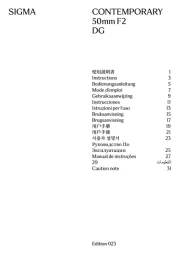
4 Juli 2025
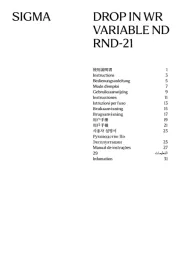
4 Juli 2025
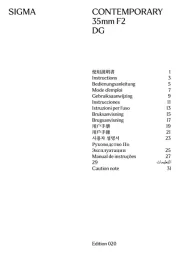
3 Juli 2025
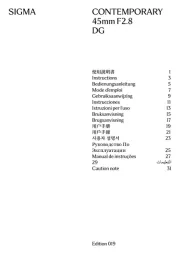
2 Juli 2025

4 Mei 2025
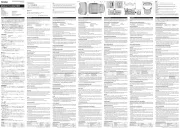
21 April 2025
Handleiding Lens
- Astera
- Aputure
- Fujinon
- Metabones
- Gigabyte
- Optoma
- Zeiss
- Flir
- Leica
- ARRI
- Tamron
- Canon
- Thypoch
- Fujifilm
- MOFAGE
Nieuwste handleidingen voor Lens
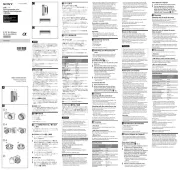
29 Juli 2025
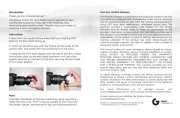
29 Juli 2025
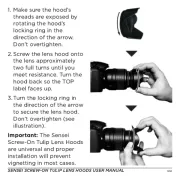
29 Juli 2025

29 Juli 2025

29 Juli 2025

29 Juli 2025

29 Juli 2025
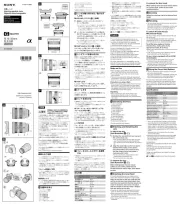
28 Juli 2025

28 Juli 2025
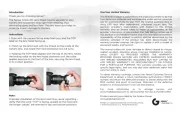
28 Juli 2025
